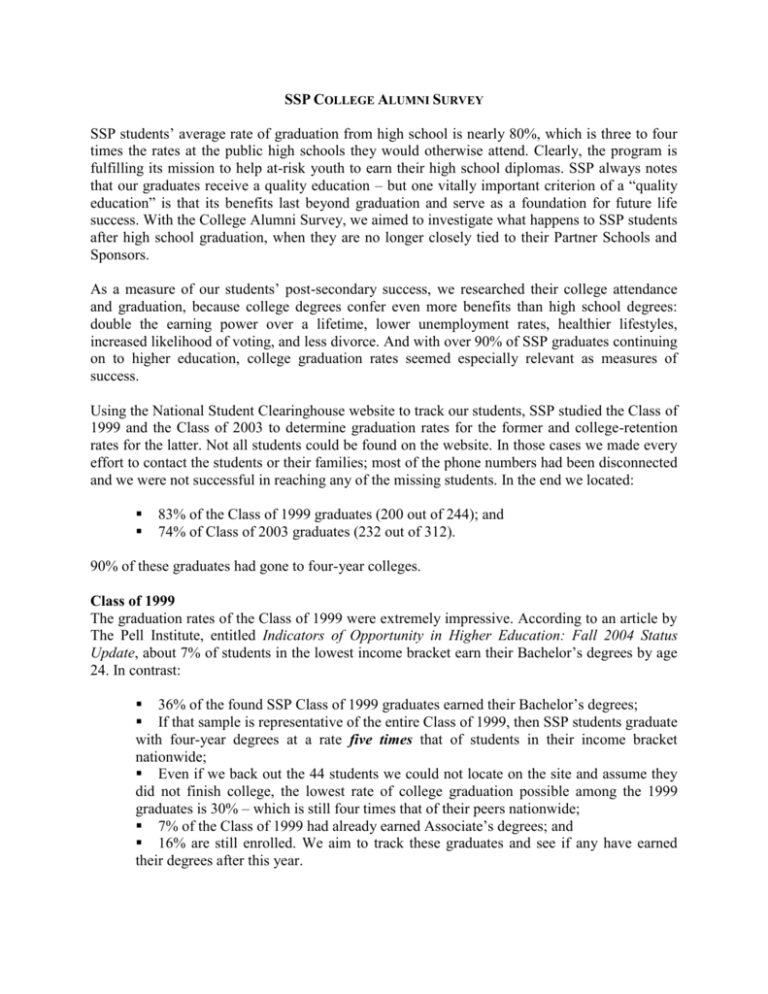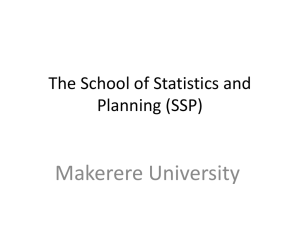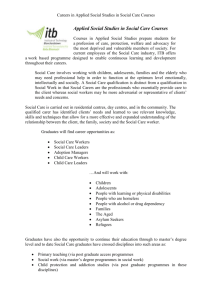COLLEGE ALUMNI SURVEY
advertisement

SSP COLLEGE ALUMNI SURVEY SSP students’ average rate of graduation from high school is nearly 80%, which is three to four times the rates at the public high schools they would otherwise attend. Clearly, the program is fulfilling its mission to help at-risk youth to earn their high school diplomas. SSP always notes that our graduates receive a quality education – but one vitally important criterion of a “quality education” is that its benefits last beyond graduation and serve as a foundation for future life success. With the College Alumni Survey, we aimed to investigate what happens to SSP students after high school graduation, when they are no longer closely tied to their Partner Schools and Sponsors. As a measure of our students’ post-secondary success, we researched their college attendance and graduation, because college degrees confer even more benefits than high school degrees: double the earning power over a lifetime, lower unemployment rates, healthier lifestyles, increased likelihood of voting, and less divorce. And with over 90% of SSP graduates continuing on to higher education, college graduation rates seemed especially relevant as measures of success. Using the National Student Clearinghouse website to track our students, SSP studied the Class of 1999 and the Class of 2003 to determine graduation rates for the former and college-retention rates for the latter. Not all students could be found on the website. In those cases we made every effort to contact the students or their families; most of the phone numbers had been disconnected and we were not successful in reaching any of the missing students. In the end we located: 83% of the Class of 1999 graduates (200 out of 244); and 74% of Class of 2003 graduates (232 out of 312). 90% of these graduates had gone to four-year colleges. Class of 1999 The graduation rates of the Class of 1999 were extremely impressive. According to an article by The Pell Institute, entitled Indicators of Opportunity in Higher Education: Fall 2004 Status Update, about 7% of students in the lowest income bracket earn their Bachelor’s degrees by age 24. In contrast: 36% of the found SSP Class of 1999 graduates earned their Bachelor’s degrees; If that sample is representative of the entire Class of 1999, then SSP students graduate with four-year degrees at a rate five times that of students in their income bracket nationwide; Even if we back out the 44 students we could not locate on the site and assume they did not finish college, the lowest rate of college graduation possible among the 1999 graduates is 30% – which is still four times that of their peers nationwide; 7% of the Class of 1999 had already earned Associate’s degrees; and 16% are still enrolled. We aim to track these graduates and see if any have earned their degrees after this year. As seen in these results, an SSP education raises a low-income student’s chances of earning a Bachelor’s degree close to that of a middle class student (which is 39%). In effect it shows that a good high school education can ameliorate the effects of having grown up in disadvantage or poverty and prepare a student for success. Though it is difficult to tease out the exact weight of each factor in promoting our students’ success – the quality education of a Partner School vs. the support and guidance of a Sponsor – one thing remains clear: participation in SSP has a positive and durable effect on a graduate’s future achievement. Class of 2003 The retention findings for the found members of the Class of 2003 were also quite positive: 80% were still enrolled in college, two years after high school graduation; One student had secured a two-year Associate’s degree. There is also evidence that even the students who have withdrawn will benefit from their time at college: the College Board found in its recent survey, Education Pays 2005, that workers who did not have a Bachelor’s degree but who had some college education still earned a median income that was 16% greater than the average worker with just a high school degree. If income is the greatest predictor of a student’s probability of earning a Bachelor’s degree, as is stated in The Pell Institute study, and SSP had no beneficial effect, we would expect to see just 7% of students earning their advanced degrees. Instead, we see SSP students, long after they have left the program, graduating college at five times the rate of their peers nationwide. UPDATE FOR 2006 SSP has continued data collection on these two classes, along with the Class of 2005, which we began tracking after their first year in college. The latest update on our alumni – based on information gathered during Summer 2006 with the help of two interns from Yale University and Dartmouth College – is as follows: Class of 1999: 43% of the graduates found on the National Student Clearinghouse have earned Bachelor’s degrees, and 6% have earned Associate’s degrees. This is up from 35% with Bachelor’s degrees after our data collection in 2005 – meaning that SSP students in this class actually earned four-year college degrees at a rate six times that of their low-income peers nationwide (just 7% of whom earn Bachelor’s degrees [according to The Pell Institute]). Class of 2003: 74% of the found graduates were still enrolled in college, three years after high school graduation. 2% have earned Associate’s degrees. Class of 2005: 90% of the found graduates were still enrolled in college, one year out from their high school graduation.







